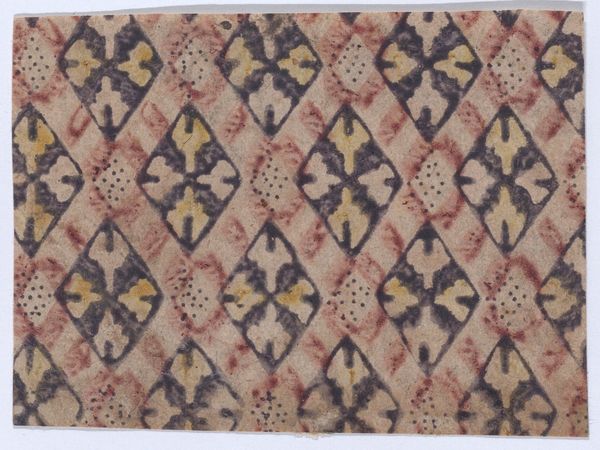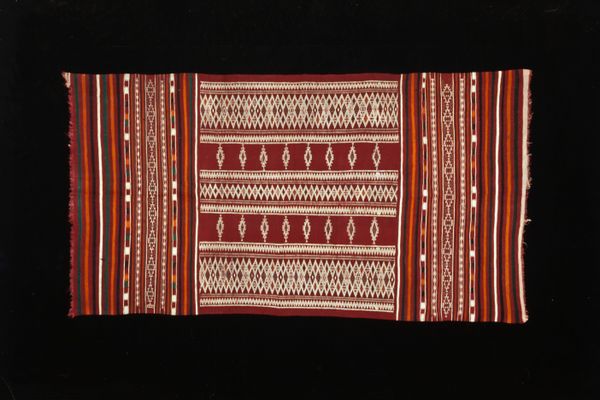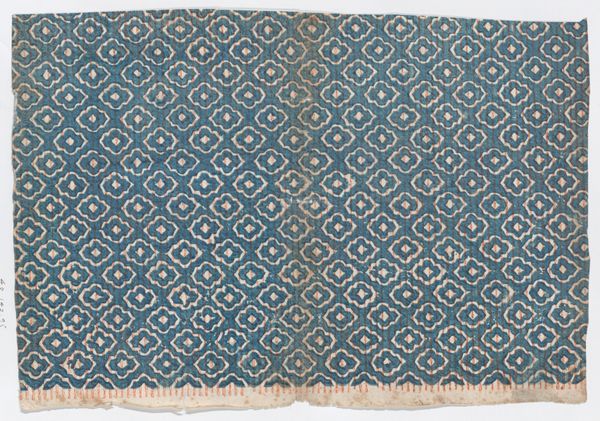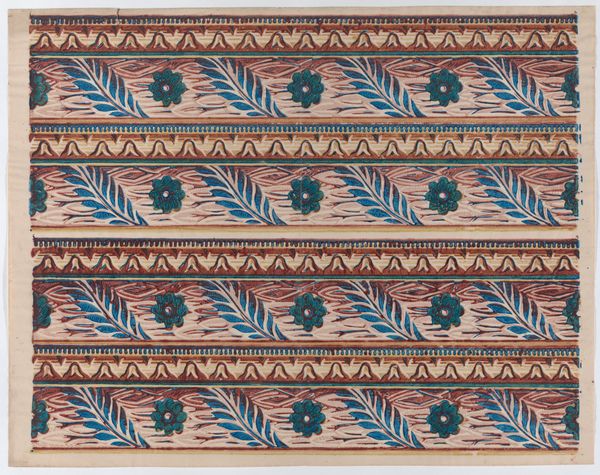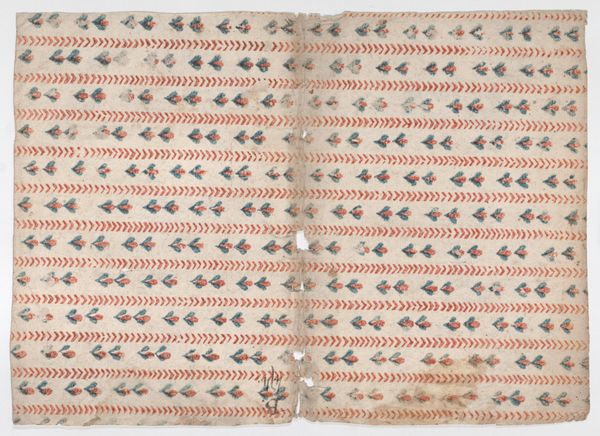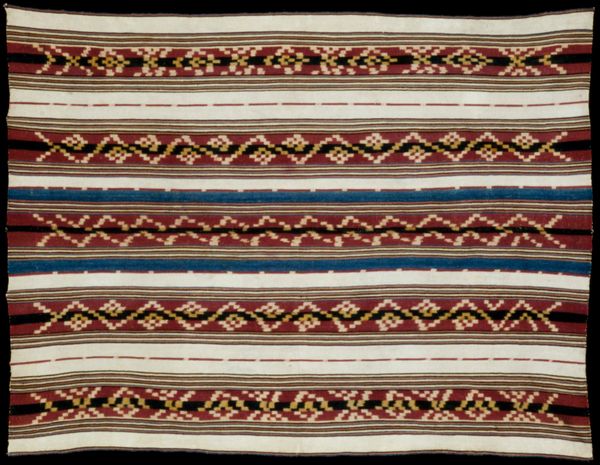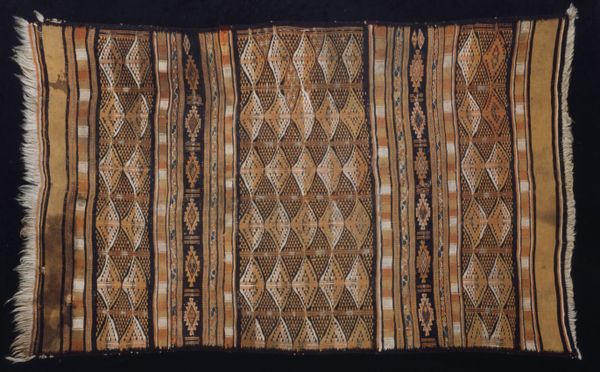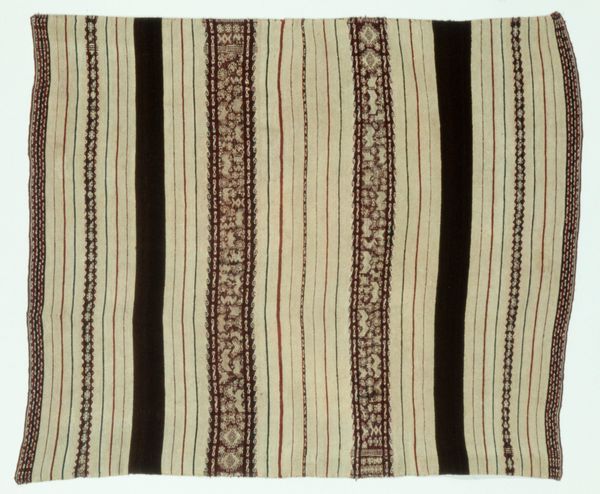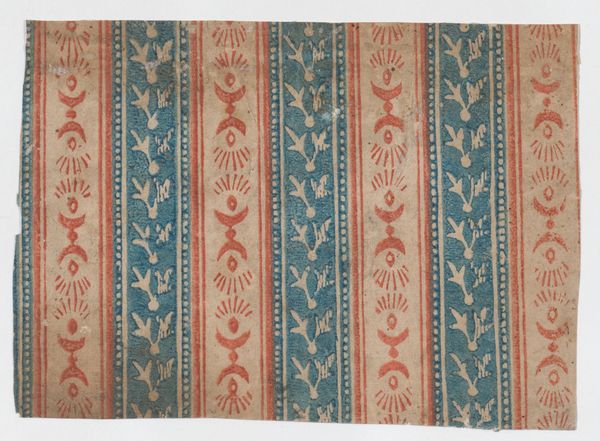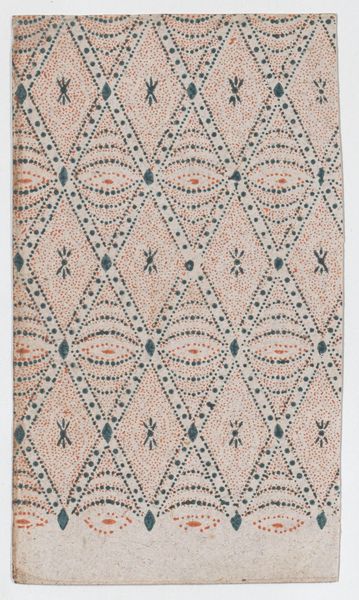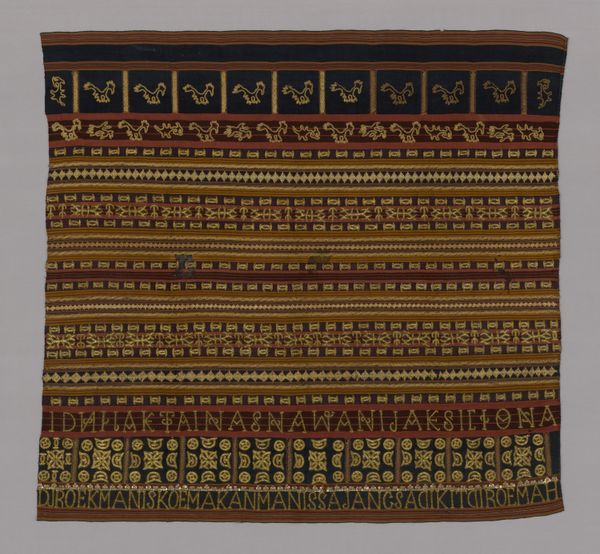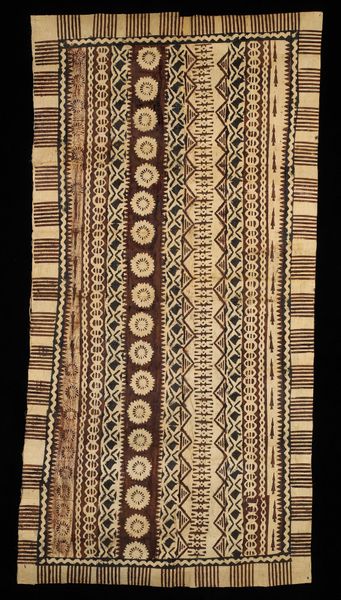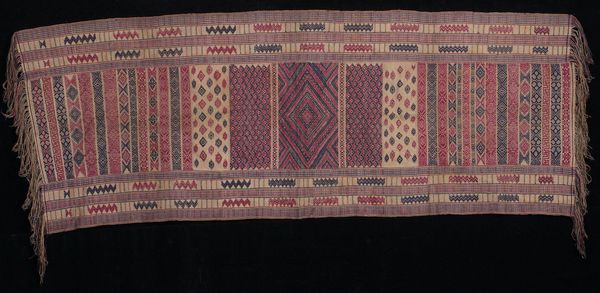
Sheet with overall zig zag and stripe pattern 1800 - 1900
0:00
0:00
drawing, print, paper
#
drawing
# print
#
paper
#
geometric
#
line
Dimensions: Sheet: 6 1/4 × 8 7/16 in. (15.8 × 21.4 cm)
Copyright: Public Domain
Editor: Here we have an anonymous drawing and print from somewhere in the 1800s. It's called "Sheet with overall zig zag and stripe pattern", and it's done with ink on paper. I’m immediately struck by the rhythm of the piece—it feels both ordered and slightly chaotic. What do you see in this work? Curator: Well, this piece to me speaks volumes about the intersections of craft, labor, and cultural expression. The repetitive nature of the pattern, the slight imperfections, it all hints at the human hand and perhaps even the social context in which it was created. Consider where, by whom, and for whom this kind of pattern would have been produced in the 19th century? Editor: That's a good point. I hadn't really considered the social implications of repetitive patterns. I was so focused on the visual aspect of the print itself! So you are asking to analyze the historical context of repetitive artistic work, and its contemporary political interpretations? Curator: Exactly! What labor does this aesthetic choice obscure? Could this sheet, for example, reflect the realities of textile production? We could then read its reliance on geometry in light of early industrialization. How might ideas of gender and class then be interwoven? Editor: Wow, I see what you mean. Thinking about this pattern as potentially connected to labor practices gives it a whole new weight. Curator: Right? It reminds us that even seemingly simple designs can carry complex narratives of power, production, and resistance, particularly in an era undergoing massive social shifts. What did the Industrial Revolution signify to ordinary people? This sheet feels anything but 'neutral'. Editor: I’m definitely going to look at patterns differently now. Thank you! Curator: It was my pleasure! Always question what seemingly neutral objects communicate about social power and labor.
Comments
No comments
Be the first to comment and join the conversation on the ultimate creative platform.
